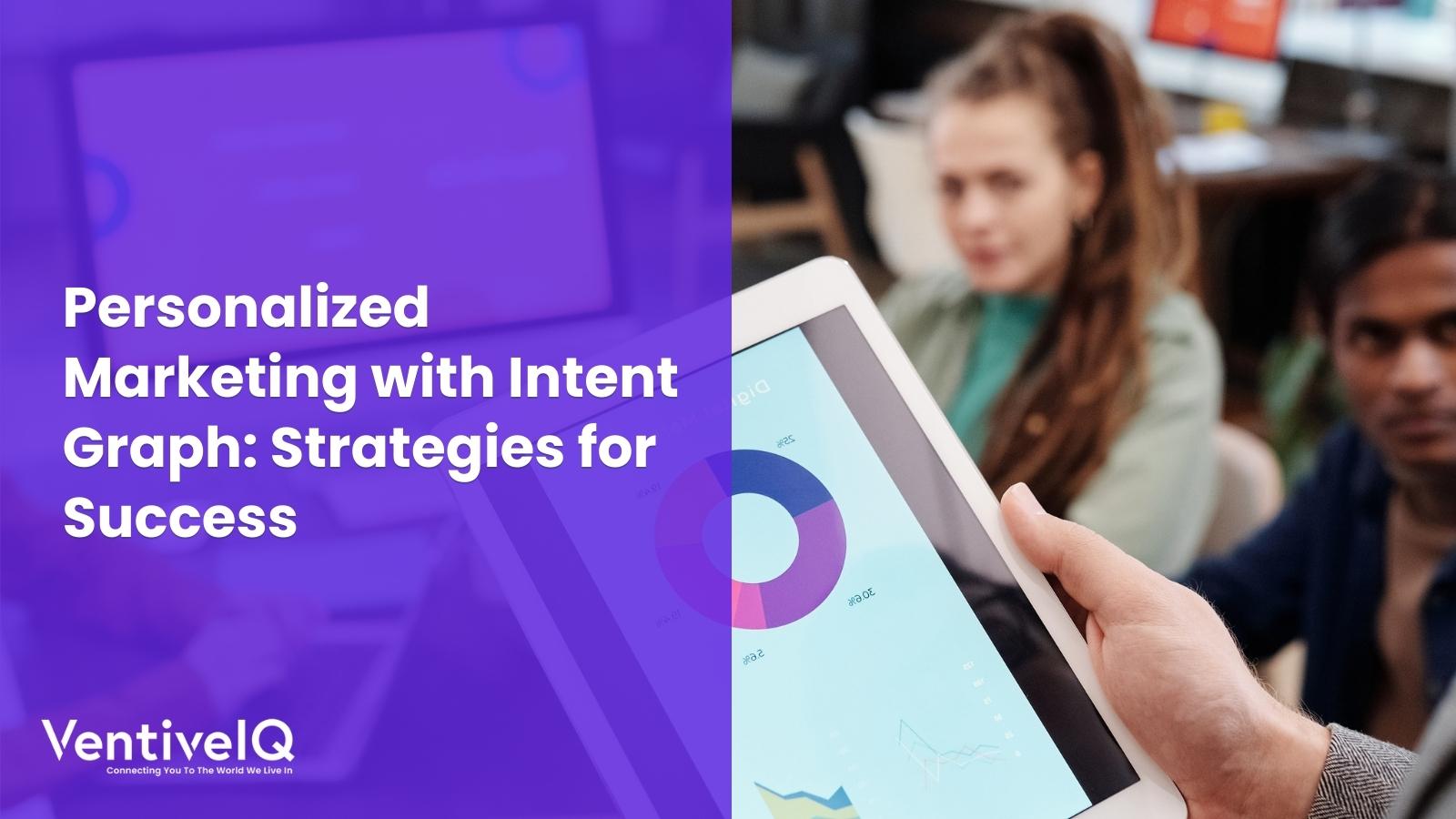Elevate your personalized marketing game backed by the Intent Graph. Dive into the world of data-driven customer engagement for unparalleled personalization success.
In a world where customers are bombarded with a myriad of messages every day, standing out can be a daunting task. That’s where personalised marketing swoops in like a superhero, and today, we’re here to talk about taking it up a notch. Brace yourselves for a deep dive into the realm of Personalized Marketing with the Intent Graph—your ticket to unprecedented success.
What’s the Buzz about Personalized Marketing?
Imagine a world where every customer interaction feels tailor-made, where your audience feels not just seen but understood. That’s the promise of personalized marketing. It’s not just about addressing customers by their first name; it’s about predicting their needs, desires, and behaviors. Isn’t this the ultimate goal in marketing?

The Rise of the Intent Graph
Enter the graph of intent, the secret sauce behind personalized marketing success. So, what exactly is it? Think of it as your customer’s digital footprint, a trail of their online behaviors, preferences, and actions. From social media engagements to website visits, the graph of intent captures it all. It’s like having a crystal ball that reveals what your customers are itching for, even before they know it!
A graph of intent is a network of interconnected nodes that represent customers, products, content, and other entities. The nodes are connected by edges that represent relationships between the entities. For example, an edge might connect a customer node to a product node if the customer has viewed the product page.
Intent graphs are generated using a variety of data sources, including website analytics, CRM data, and customer support tickets. By analyzing this data, graphs of intent can reveal insights into customer behavior, preferences, and needs.
Why Does the Intent Graph Matter?
The power of the graph of intent lies in its ability to decipher intent. Instead of relying solely on past behaviors, it taps into real-time signals, allowing you to respond to your customers’ needs in the moment. This dynamic approach transforms your marketing from reactive to proactive. It’s not just about what your customers did; it’s about what they want to do next.
How can you use intent graphs for personalized marketing Strategies?
Graphs of intent can be used to personalize marketing campaigns in a variety of ways. Here are a few examples:
- Targeted product recommendations: graphs of intent can be used to recommend products to customers based on their past behavior and interests. For example, if a customer has viewed the product page for a new smartphone, you could recommend other smartphone accessories or services.
- Personalized email marketing: graphs of intent can be used to create more personalized email campaigns. For example, you could send customers emails about products they’ve viewed or abandoned shopping carts.
- Dynamic content personalization: graphs of intent can be used to personalize the content on your website. For example, you could display different product recommendations or blog posts to customers based on their interests.
Benefits of using intent graphs for personalized marketing
There are many benefits to using graphs of intent for personalized marketing, including:
- Increased customer engagement: When customers receive personalized messages and experiences, they’re more likely to engage with your brand. This has the potential to boost the number of visitors to your website, increase interactions on social media, and foster stronger customer loyalty.
- Higher conversion rates: When customers are presented with the products and content, they’re most interested in, they’re more likely to make a purchase.
- Boosted revenue: Increased customer engagement and conversion rates lead to boosted revenue.

How to implement intent graphs for personalized marketing
If you’re interested in implementing graphs of intent for personalised marketing, here are a few steps you can take:
- Collect data: The first step is to collect data about your customers and their interactions with your brand. This data can come from a variety of sources, including website analytics, CRM data, and customer support tickets.
- Build an intent graph: Once you have collected your data, you can use a dedicated graph of intent platform to build an intent graph. This platform will analyze your data and create a visual representation of how your customers interact with your brand.
- Identify customer segments: Once you have built a graph of intent, you can use it to identify customer segments. These segments should be based on customer behavior, interests, and needs.
- Personalize your marketing campaigns: Once you have identified your customer segments, you can start to personalize your marketing campaigns. Use your graph of intent to understand each segment’s interests and needs, and then tailor your messages and experiences accordingly.
VentiveIQ’s role
VentiveIQ plays a pivotal role in the success of personalised marketing strategies leveraging the graph of intent. As a leading provider of cutting-edge marketing solutions, VentiveIQ empowers businesses to harness the full potential of the graph of intent for unparalleled customer engagement and personalization success in the USA market.
- Intent Graph Integration
- Data Unification and Analysis
- Segmentation and Targeting
- Dynamic Content Creation
- Real-Time Campaign Optimization
- AI-Powered Predictive Analytics
- Privacy and Compliance
- Continuous Innovation and Support
Example of how VentiveIQ can be used to implement personalized marketing with intent graphs:
A clothing retailer uses VentiveIQ to collect data about its customers and their interactions with its brand. This data includes the products customers have viewed, the pages they have visited, and the items they have purchased.
VentiveIQ then uses this data to generate a graph of intent that shows how customers are moving through the buyer’s journey and what products they’re most interested in. For example, the graph of intent might show that customers who have viewed the product page for a new dress are also likely to be interested in shoes and handbags.
The clothing retailer can then use this information to personalize its marketing campaigns. For example, the retailer could send customers who have viewed the product page for a new dress an email with a personalized recommendation for shoes and handbags. The retailer could also display different product recommendations on its website to customers based on their interests.
Overcoming Challenges for Personalization Success
While the graph of intent is a game-changer, it’s essential to navigate potential challenges. Let’s explore some typical challenges and ways to tackle them:
- Privacy Concerns: With great data comes great responsibility. Assure your customers that their data is handled with care. Be transparent about your data practices and offer clear opt-in/opt-out mechanisms. Build trust, and your customers will be more willing to share the insights that power the graph of intent.
- Data Accuracy: The success of personalized marketing hinges on accurate data. Regularly audit and clean your data to ensure its reliability. Embrace technologies like machine learning to enhance data accuracy and keep your graph of intent sharp and focused.
- Balancing Automation and Human Touch: While automation is a powerful ally, don’t lose sight of human touch. Use the graph of intent to inform your strategy, but always remember the importance of genuine, human connection in your marketing efforts.

The Road Ahead: Personalization Triumphs in the USA Market
Graphs of intent are a powerful tool for personalized marketing. As you embark on your personalised marketing journey with the graph of intent, keep your finger on the pulse of your audience. The USA market is dynamic, and so should be your strategy. Monitor, adapt, and evolve to stay ahead in the game. Remember, personalised marketing isn’t just a trend; it’s a revolution. The Intent Graph is your beacon, guiding you through the maze of customer preferences and behaviors. So, gear up, marketers! It’s time to unlock the magic of personalized marketing and create experiences your customers will cherish.

